Students Focus on Sunny Futures During Mini-Semester
In Three Days at NREL, Undergraduates from Across the Country Learn About Energy Research Opportunities
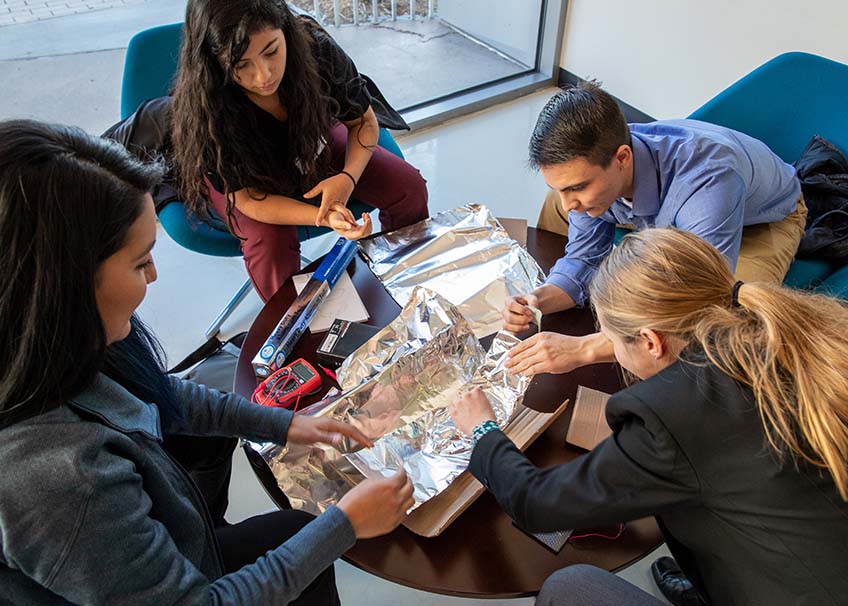
They puzzled over the best design for a homemade solar concentrator as part of a challenge to all 21 attendees of NREL’s Mini-Semester Program. Over three days during their winter break on the NREL campus in Golden, Colorado, undergraduates interact with scientists and researchers, attend lectures on current projects, participate in hands-on science activities related to current research, and attend facility tours to experience work in progress.
“We could just cut this piece right here,” said Melissa Perez, a senior from University of Texas-El Paso, pointing to a piece of cardboard.
Their goal was to make a parabolic concentrator that could focus the sun’s rays on a solar cell—and increase the energy captured by the tiny device. “I don’t know how well it’s going to hold up—the shape,” worried Shannon Hamp, a Colorado native who’d come down from Montana State University.
Fortunately on Jan. 6, the first day of the program, the sun was cooperating even if the materials—various-sized cardboard boxes, rolls of aluminum foil and duct tape, and solar cells—were not. Before beginning the hourlong exercise, NREL scientist Adele Tamboli had cautioned participants that foil isn’t easy to sculpt.
The group debated plans then decided upon a solution all agreed was workable. “Now I understand what we’re doing,” said Sean Regalado-Love, also a senior Colorado State University-Pueblo, as he deftly trimmed the edges with scissors. “Should we bend the edges?” asked Jacqueline Solis-Armanta. Hands adjusted an angle. “This reminds me of when I was making a space tunnel in like sixth grade,” laughed Solis-Armanta, who will be transferring from Front Range Community College to the University of Colorado-Boulder.
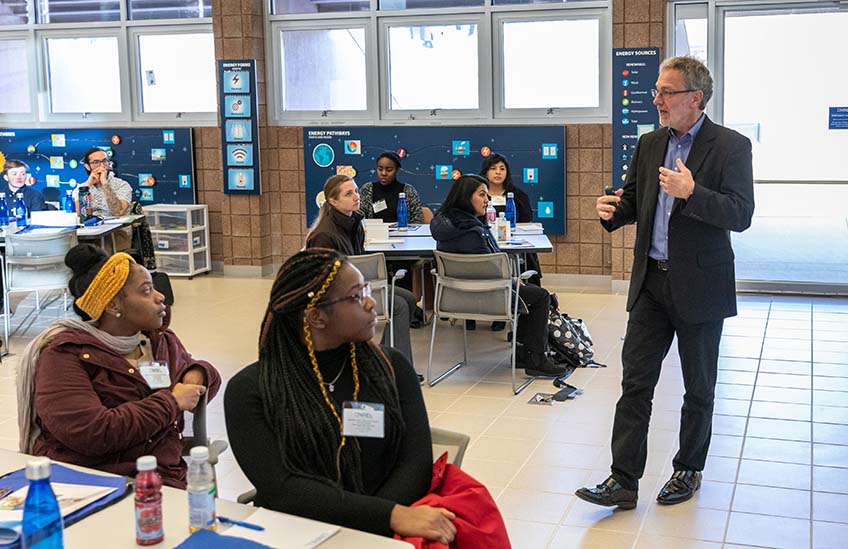
Solar Concentrators Get Real
As they cooperated, a two-limbed reflector emerged.
Tamboli, a solar energy expert who introduced the concentrating concepts, monitored progress along with others. As the groups experimented with differing options, she offered a hint. “There’s still a very large box available. Big is good,” she said, gesturing towards the supply pile in the room. One student rummaged in the stacks.
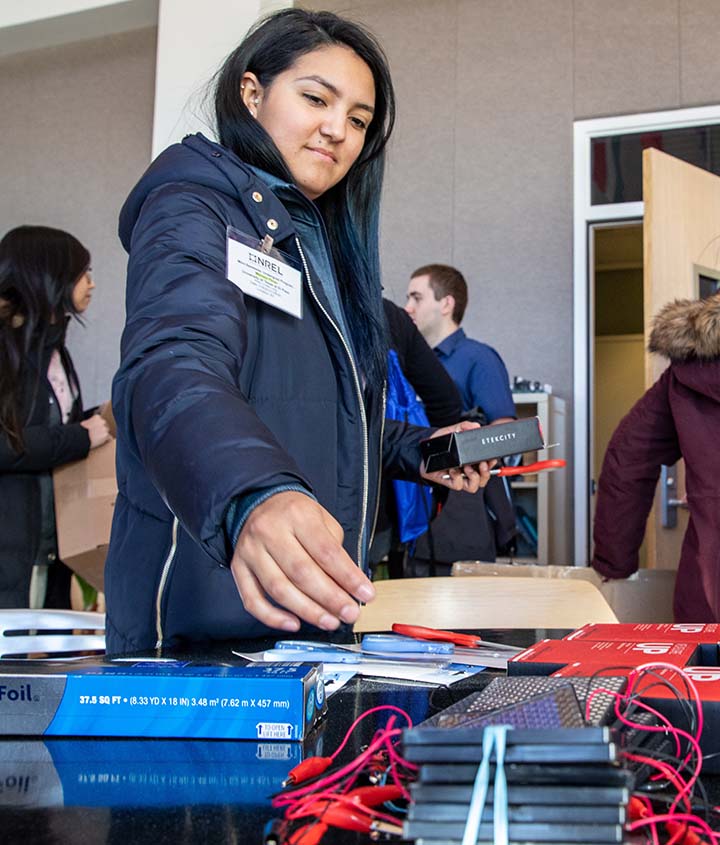
“It’s trial and error,” Perez said, pondering the form, then suggesting, “What if we stand it up?”
Ideas pinged around the table, and then the team took another test run. The voltmeter showed that curvier parabola 2.0 had slightly better readings than the first. “Good job guys,” Regalado-Love said, as they congratulated one another and smiled.
Nearby, Reyla Ponder from Spelman College in Atlanta, Georgia, also sounded pleased with her team’s outcome. “Our deeper box made a huge difference,” she observed as her partners carried their funnel-shaped collector indoors.
When the groups all reassembled and compared notes inside, Tamboli complimented them on their inventions. They had calculated the concentration ratio—that is, the ratio of electrical current in the concentrator to the current at one sun (the term for the solar irradiance from the sun). All had increased the power output using different styles of concentrators that varied from the smallish trough to a very large, four-armed suncatcher. Indeed, one concentrator closely mimicked an actual commercial style solar collector. Tamboli smiled. “It’s always so incredible to see what they come up with,” she said.
Though their ratio wasn’t the highest, the parabolic-builders were satisfied not only with the results, but their collective achievement. “We accomplished teamwork,” declared Regalado-Love. “And built two perpendicular parabolic troughs.” As Solis-Aramanta summed up, “We were able to get the solar energy to concentrate into the panel and get the most out of the sun.”
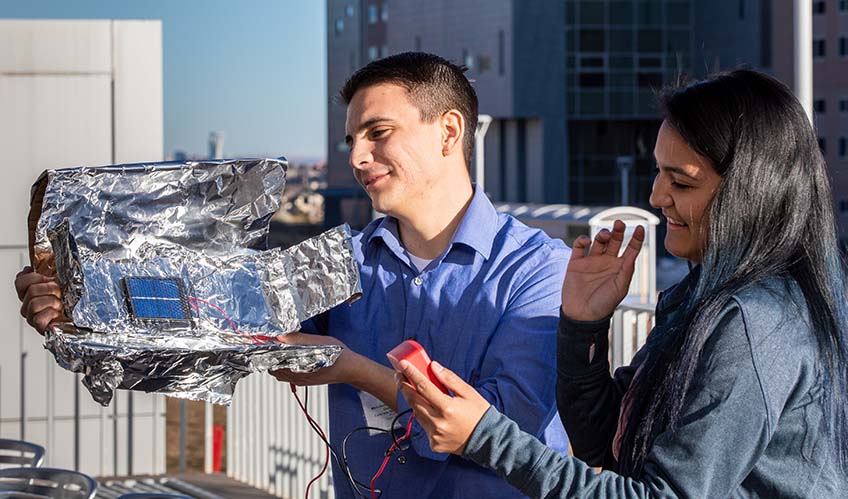
Big Exposure in a Mini-Semester
Enthused, the group then returned to other stops in the three-day intensive mini-semester, touring other laboratory facilities and gaining exposure to renewable energy technologies with hands-on activities.
On the final day, they engaged in a buildings hackathon, again forming teams to develop a residential building envelope retrofit product under the mentorship of Chioke Harris, Bethany Sparn, Tony Fontanini, and Ardelia Clarke.
The 72-hour period was as focused as a solar concentrator.
All agreed that one highlight was an introduction from NREL Director Martin Keller, who gave an overview of the laboratory’s mission. “We treat this lab like family,” he said. The joint goal boils down to this: “We have a planet to save.” He invited them to consider NREL as a place to grow their careers.
The message resonated. NREL organizers think that a number of the attendees will also participate in the Department of Energy Office of Science’s summer Science Undergraduate Laboratory Internship and Community College Internship programs at NREL.
Last year, nine of the 21 students in Mini-Semester became interns, and NREL Workforce Development Manager Linda Lung is optimistic that the number will be higher this year. Overall, the Office of Science is funding concurrent Mini-Semester programs at Brookhaven, Oak Ridge, and Lawrence Berkeley national laboratories as well as NREL.
“The goal of the Mini-Semester program is to diversify the application pool of the undergraduate internship programs,” Lung said, adding that students “are excited to become part of the energy solution.”
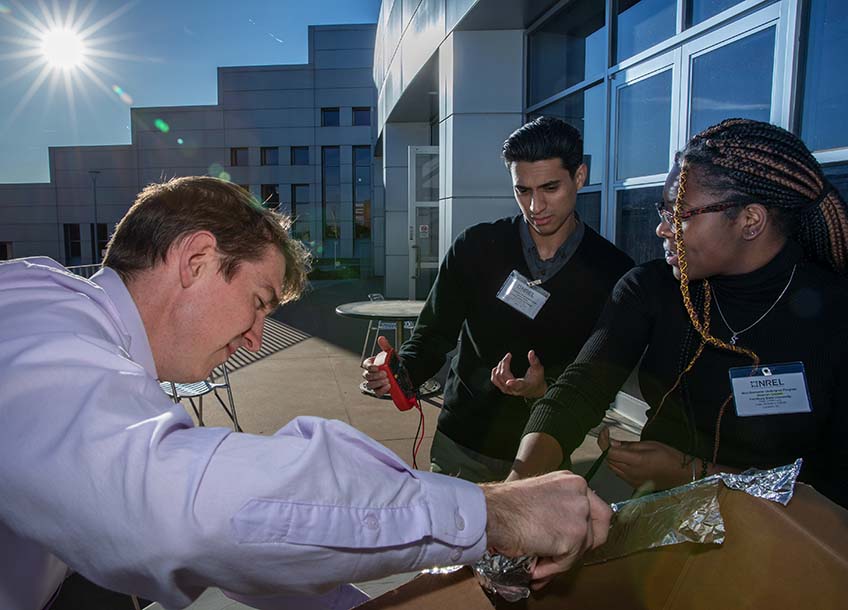
The Mini-Semester, though brief, was potentially life-changing. And all it took was some foil, cardboard boxes, an eagerness to learn, and an opportunity to find creative scientific solutions.
View more photos from the event and learn more about NREL's opportunities for students.
Last Updated May 28, 2025
